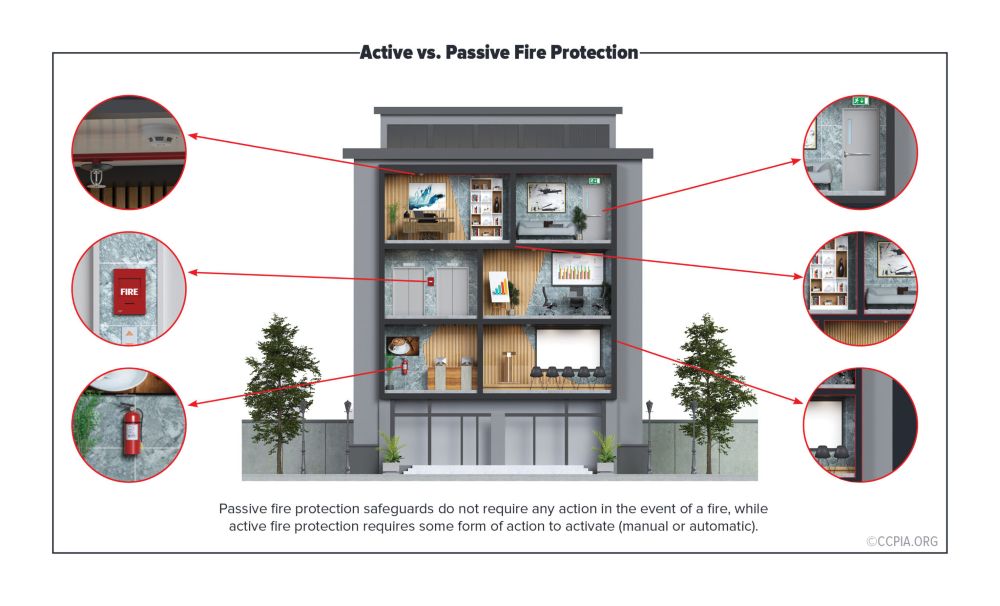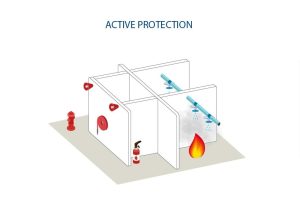
Fire safety is vital in every building — whether it’s a home, workplace, or public space. To keep people safe, two main types of fire safety measures are used: passive fire safety and active fire safety. They work in different ways but are both essential in protecting lives and preventing fire from spreading.

What is Passive Fire Safety?
Passive fire safety, sometimes called passive fire protection, is built into the structure of a building. Its job is to contain fire and smoke, slow down its spread, and protect escape routes — without the need for human action or activation.
Examples of Passive Fire Safety Measures
- Fire doors – hold back flames and smoke for a set time, creating safe exit routes.
- Fire-resistant walls, floors, and ceilings – prevent fire from spreading between areas.
- Compartmentation – dividing a building into fire-resistant sections to keep fire contained.
- Fire stopping – sealing gaps around pipes, ducts, and cables so fire and smoke cannot travel through.
Passive fire protection is the unseen layer of safety always working in the background. It doesn’t stop a fire starting, but it limits damage and buys valuable time for evacuation.

What is Active Fire Safety?
Active fire safety, also known as active fire protection, includes systems and equipment that respond when a fire occurs. Unlike passive fire measures, these systems require a trigger — from heat, smoke, or human use.
Examples of Active Fire Safety Measures
- Fire alarms – detect smoke or heat and warn people to evacuate.
- Sprinkler systems – automatically release water to control or extinguish fire.
- Fire extinguishers – used manually to tackle small fires at the source.
- Emergency lighting – activates during power cuts, guiding people safely out of a building.
Active fire protection is about detection, response, and suppression, helping people act quickly and reducing the impact of a fire.
Why Both Passive and Active Fire Safety Are Important
Effective fire prevention relies on both strategies working together:
- Passive fire protection contains fire and smoke, giving more time to escape.
- Active fire protection alerts, guides, and suppresses, helping people evacuate safely and limiting damage.
Without passive measures, fire can spread too quickly. Without active measures, people may not know a fire has started. Together, they create a layered approach to fire safety that saves lives and protects buildings.
Final Thoughts
Understanding the difference between passive and active fire safety helps building owners, managers, and residents appreciate why both are essential. A strong fire safety plan should combine passive fire protection and active fire protection to reduce risk, protect property, and most importantly — keep people safe.
